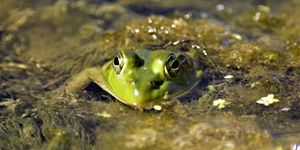New coral gardens discovered in ocean's depths
Bremer Canyon Marine Park sits in the Indian Ocean off the southern coast of Western Australia, a 4472 km² marine protected area teeming with marine biodiversity. Known specifically for the charismatic megafauna that populates it every year, such as killer whales and dolphins, the area receives many tourists hoping to glimpse the marine mammals. However, a recent expedition of the seafloor of the marine park has shown that there are equally as splendid sights to see deep below the surface of the ocean.
The expedition was led by researchers from the University of Western Australia (UWA) using the Schmidt Ocean Institute's (SOI) deep-sea remotely operated vehicle, SuBastian. The vehicle is able to sample depths as far as 4,500 meters. It is important to note that the depths of the marine park vary substantially, ranging from 15–5000 meters.
Within the canyon, the research team navigated SuBastian to collect samples from 200-4,000 meter depths. They gathered everything from deep-sea corals, associated fauna, seawater, and geological samples, commenting in awe on the vast biodiversity found in even the deepest regions.
"A particular species of solitary cup coral was found during the expedition. This is significant because we are working on the same coral in the Ross Sea on the Antarctic shelf, in much colder waters," said collaborator and co-Chief Scientist Dr. Paolo Montagna from the Institute of Polar Sciences in Italy. "This is an important connection between disparate sites across the Southern Ocean, which helps us trace changes in water masses forming around Antarctica and dispersing northward into the Indian and other oceans."
"We have already made a number of remarkable discoveries from the Bremer Canyon," said Dr. Julie Trotter, the Chief Scientist from UWA who led the expedition. "The vertical cliffs and ridges support a stunning array of deep-sea corals that often host a range of organisms and form numerous mini-ecosystems."
The researchers have begun categorizing their findings into a complex database that tracks biological, geological, and bathymetric data. They hope the data will assist in creating appropriate conservation goals and ocean management policies, as well as improve awareness within the public about the wonders lying deep below the sea surface. The scientists note that Australia’s investment in marine investigation is lacking; as of now the country only has a single oceanographic vessel available for scientific research and no supporting deep-sea underwater robots.
Sources: Schmidt Ocean Institute, Science Daily








